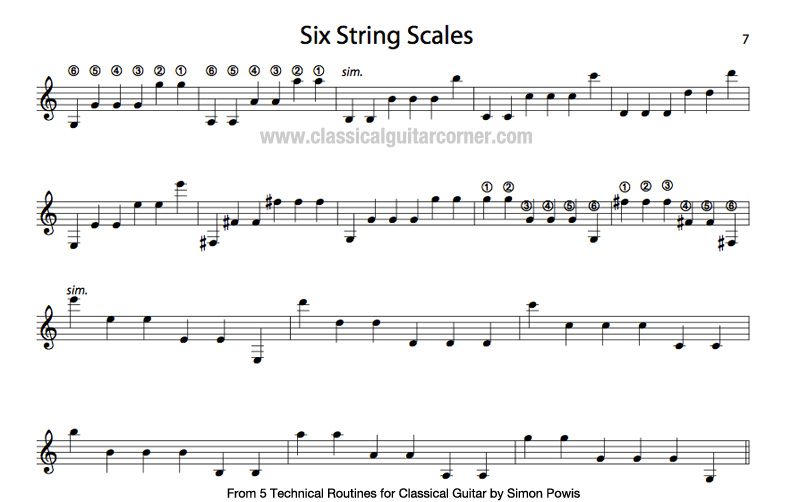Six String Scales
This article will introduce you to six string scales, which are a great way to learn notes on the fretboard.
I am sure someone else has come up with this before but during my sight reading research I developed this little exercise. I call it “Six String Scales.” The goal of this exercise is to practice finding notes all over the fingerboard. It also reinforces your knowledge of key signatures along the way.
Here’s how it works:
The normal scale on the guitar will most likely create a pattern that you can shift up and down the fretboard. Patterns on the guitar are great and often make things easier. But, because you are not thinking about the notes when playing a pattern, it is all too easy to fall into the trap of mindless finger movements.
Six String Scales involves playing each degree of the scale once on each string. So, if you are playing E Major, you will play “E” on the 6th string, then “E” on the 5th string, 4th string, 3rd, 2nd, and 1st. Then, you can move to the second degree of the scale “F#” and repeat the process. You will find that some notes are easier than others and often notes living up around the 9th fret will be a little more foreign than those in the first position.
An important rule
The one rule that stops patterns forming in this exercise is that you cannot play any notes above the 12th fret. If you have a note that falls on the 12th fret and the open string, you can choose which one to play. But, you cannot play any notes on the 13th fret or above. This way you will have to actively search for the notes and be thinking about the correct notes in each key.
- If you would like to further challenge your self try these:
- Descending from the 1st to 6th string
- Adding intervals to the initial note (3rds, 5ths, octaves etc.)
- Adding rhythms to the individual notes so as to practice right hand technique at the same time
This exercise can be found in the book: 5 Technical Routines for Classical Guitar – Intermediate/Advanced

